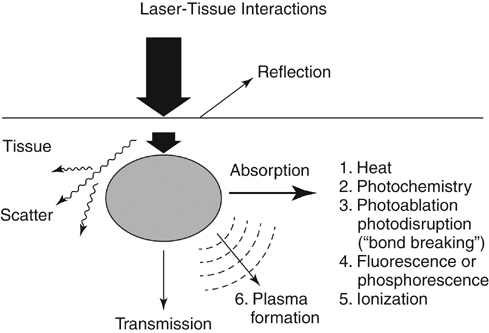Laser light causes a variety of effects on tissue depending on the concentration of energy delivered and the interval of energy exposure (Figure 1). The dominant effect between laser energy and biologic tissue is a photothermal reaction as tissue chromophores absorb the laser light with conversion to thermal energy. A high absorption coefficient favors efficient thermal ablation at lower energy densities, with decreased surrounding zones of thermal injury. Early thermal lasers heated the atheroma and arterial wall in order to coagulate or weld the artery in an open, dilated position. The destruction of endothelium and vascular smooth muscle was initially deemed beneficial for the inhibition of thrombosis and restenosis. Subsequent laser angioplasty systems have emphasized the use of laser energy for the direct ablation of atheroma, with minimal thermal damage to surrounding tissue.
Percutaneous Cryoplasty and Laser Treatment of Lower Extremity Occlusive Disease
Laser Effects on Target Tissue
Thoracic Key
Fastest Thoracic Insight Engine




